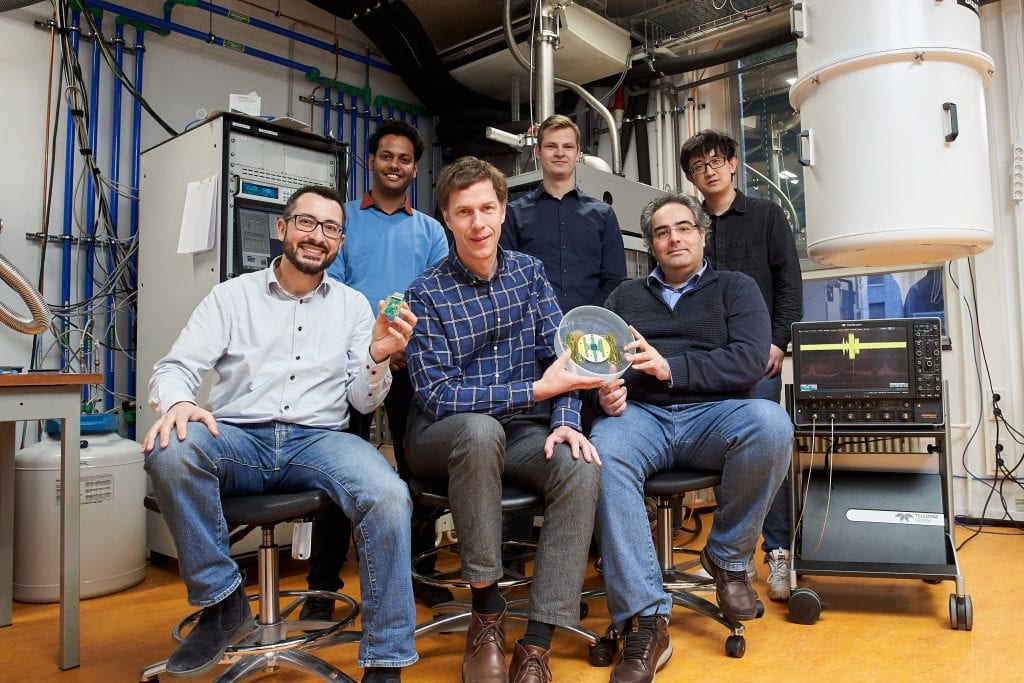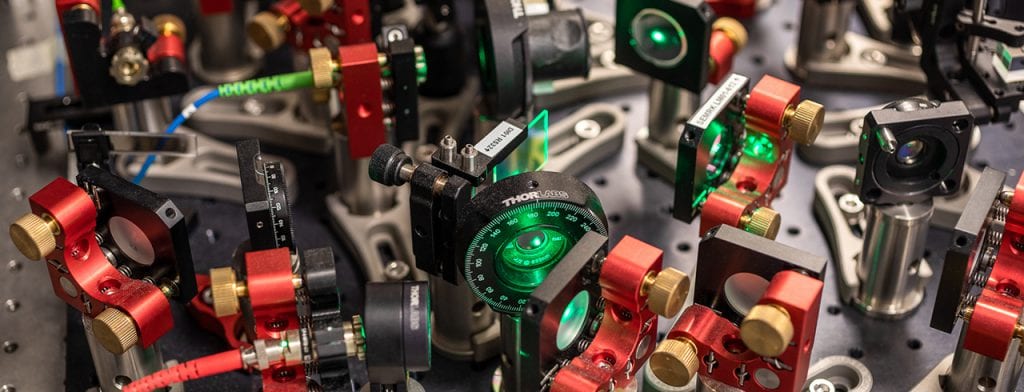12.05.2021Quantum Computing
Cold chips can control qubits

A cryogenic controller chip opens the door to solving the ‘wiring bottleneck’ and subsequently to realize a fully integrated, scalable quantum computer.
A specially designed chip to control qubits can operate at extremely low temperatures, and opens the door to solving the ‘wiring bottleneck’. Researchers and engineers from QuTech and Intel jointly designed and tested the cryogenic chip and made an important step towards a scalable quantum computer. Their results are published in the scientific journal Nature.
Each basic unit of a quantum computer, a qubit, is typically addressed individually by a single wire. ‘This stands in the way of a scalable quantum computer, since millions of qubits would require millions of wires’ explains lead investigator Lieven Vandersypen. ‘This hurdle is called the ‘wiring bottleneck’. In traditional computers, a modern processor with billions of transistors has only a few thousand connections. The wiring problem is aggravated by the cryogenic temperatures at which qubits operate (20 millikelvin, or about -273 degrees Celsius), and the fact that the electronics to control the qubits operate at room temperature. Conventional chips simply cannot endure the extreme temperatures, so a new cryogenic control chip has been designed and tested.’
Intel Horse Ridge
Engineers at Intel and QuTech—a collaboration between Delft University of Technology and TNO—designed a special silicon-based integrated circuit able to withstand the cold (3 degrees Celsius above absolute zero) and also address qubits. The so-called ‘Horse Ridge’ chip is named after the coldest place in Oregon, the state where the Intel lab resides.
‘We exploited the same technology adopted for the conventional microprocessor, the CMOS technology. For Horse Ridge, we specifically used the Intel 22nm low-power FinFET technology,’ said co-lead investigator Edoardo Charbon. ‘As electronic devices operate very differently at cryogenic temperatures, we used special techniques in the chip design both to ensure the right chip operation and to drive the qubits with high accuracy.’ Ultimately the controller chip and the qubits can be integrated on the same die (as they are all fabricated in silicon) or package, thus further relieving the wiring bottleneck.
High fidelity and good programmability
To assess the quality of the cryogenic Horse Ridge control chip it was compared to a classical room temperature controller. It turns out the gate fidelity of the system is very high (99.7%) and limited not by the controller but by the qubits themselves. That’s great news for the performance of the cryogenic control chip.
Next, the programmability of the controller was showcased using a two-qubit quantum algorithm. The Deutsch–Jozsa algorithm is one of the simplest algorithms that is much more efficient on a quantum computer than a traditional computer. This demonstrates the ability to program the control chip with arbitrary sequences of operations, and opens the way to on-chip implementation and a truly scalable quantum computer.
Publication details
CMOS-based cryogenic control of silicon quantum circuits
Xue, Patra, Van Dijk, Samkharadze, Subramanian, Corna, Paquelet Wuetz, Jeon, Sheikh, Esdras Juarez-Hernandez, Perez Esparza, Rampurawala, Carlton, Ravikumar, Nieva, Kim, Lee, Sammak, Scappucci, Veldhorst, Sebastiano, Babaie, Pellerano, Charbon & Vandersypen.
DOI: 10.1038/s41586-021-03469-4

The Horse Ridge output is visible on the screen on the bottom right. From top to bottom, from left to right: Bishnu Patra, Jeroen van Dijk, Xiao Xue, Fabio Sebastiano (holding the qubits), Lieven Vandersypen and Masoud Babaie (holding Horse Ridge). This photo is taken by Ernst de Groot.
Header photo: ‘Frosted’ photograph of the Intel Horse Ridge chip mounted on a circuit board. The photo is taken by Marieke de Lorijn.


